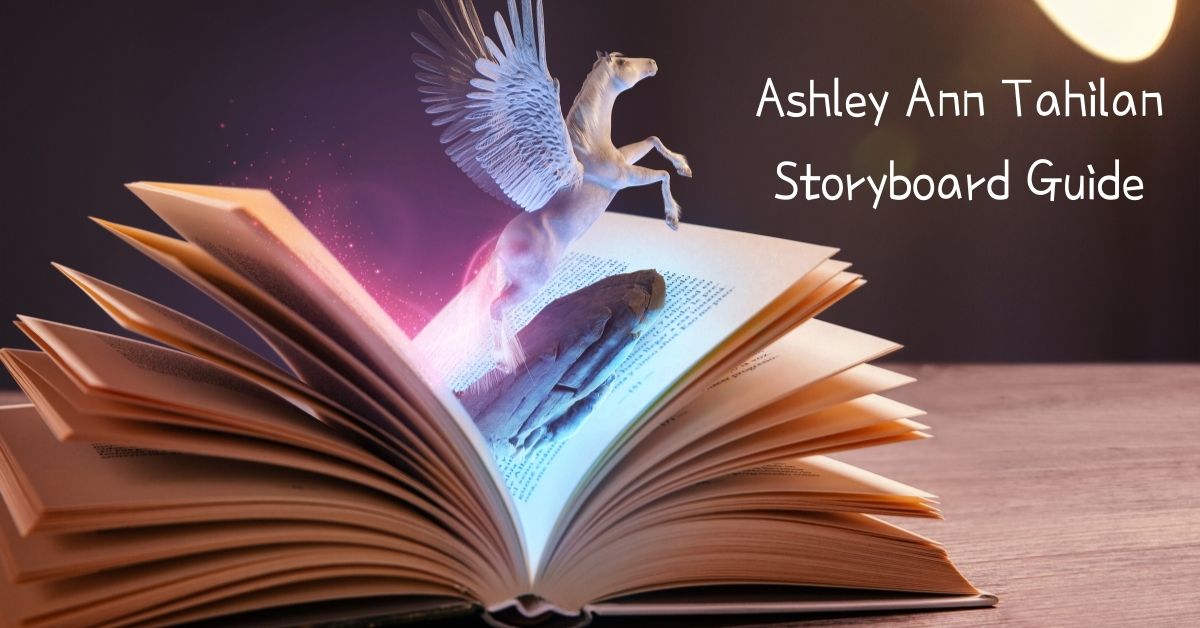Storyboarding is a vital component of visual storytelling, from film to animation, and even in marketing. One name that has risen to prominence in the storyboarding world is ashley ann tahilan storyboard guide. Her innovative approach to visualizing stories has set her apart, providing valuable lessons for both aspiring and established artists. In this guide, we’ll explore her methods, techniques, and how you can use them to enhance your creative process.
What is Storyboarding?
At its core, a storyboard is a visual representation of a narrative. It’s made up of a series of sketches or images that depict key moments in a script, helping creators see how their story will unfold on screen. Whether for movies, TV shows, or commercials, storyboarding is a crucial part of pre-production that helps plan scenes, camera angles, and transitions.
You Might Also Like: Understanding Cyanová: A Comprehensive Exploration
The Role of Storyboarding in Visual Storytelling
Storyboarding bridges the gap between an idea and its final execution. It’s a creative tool that allows directors, animators, and writers to visualize their story before they bring it to life. A well-crafted storyboard can shape the entire narrative, ensuring that the pacing, visual cues, and mood of the story are cohesive and engaging.
Who is Ashley Ann Tahilan?
Ashley Ann Tahilan is a renowned storyboard artist known for her innovative work in the industry. Her unique ability to blend creativity with technical precision has earned her recognition across various media, including film and animation. Tahilan’s work has not only redefined how stories are visually represented but also inspired many aspiring storyboard artists.
Why Ashley Ann Tahilan’s Storyboard Approach Stands Out
Tahilan’s approach is all about maximizing the power of simplicity. While traditional storyboarding focuses on detailed, often elaborate sketches, she emphasizes clarity and emotional impact. Her storyboards capture the essence of a scene without overwhelming the viewer with unnecessary details, making it easier for directors and animators to translate her visuals into compelling scenes.
Step-by-Step Guide to Creating a Storyboard
Step 1: Understanding the Script
The first step in storyboarding is breaking down the script. Understanding the narrative flow, key emotional beats, and visual tone of the story is crucial. Tahilan often starts by reading the script multiple times, noting down the key moments that need to be visually highlighted.
Step 2: Sketching Key Scenes
Once you’ve grasped the script, the next step is to sketch the most important scenes. This involves deciding which moments will be key to driving the narrative. These sketches don’t have to be perfect; their goal is to give a rough idea of how each scene will look.
Focusing on Camera Angles and Composition
One of Tahilan’s strengths is her eye for camera angles. By varying the angles, she ensures that the scenes feel dynamic and engaging. Whether it’s a close-up to capture an emotional expression or a wide shot to show the scale of a location, each choice is deliberate.
Incorporating Character Movements and Expressions
Conveying movement is an essential part of storyboarding. Ashley Ann Tahilan pays special attention to how characters move and interact with their environment, which is crucial for maintaining the flow and energy of the scene.
Step 3: Refining and Revising the Storyboard
No storyboard is perfect on the first try. Tahilan believes in iteration and refinement. By revisiting her initial sketches, she fine-tunes the details, ensuring that every panel communicates the intended message clearly.
Ashley Ann Tahilan’s Top Tools for Storyboarding
While Tahilan is known for her mastery of traditional drawing techniques, she has also embraced digital tools. Software like Storyboard Pro, Photoshop, and Toon Boom are essential in her workflow, allowing her to create more polished and detailed work.
The Art of Collaboration in Storyboarding
Storyboards aren’t just for the storyboard artist—they are essential communication tools for the entire production team. Tahilan works closely with directors, animators, and writers to ensure that her vision aligns with the overall project. This collaborative approach helps bring the story to life cohesively.
Common Mistakes in Storyboarding and How to Avoid Them
One common mistake is overcomplicating the storyboard. Beginners often try to include too much detail, which can clutter the narrative. Tahilan advises focusing on the key elements of each scene and letting the director or animator fill in the finer details.
Ashley Ann Tahilan’s Tips for Aspiring Storyboard Artists
For those looking to break into the industry, Tahilan emphasizes the importance of consistency and practice. Developing a unique style and honing your skills over time are key. She also recommends studying films and animations to understand how scenes are constructed visually.
Case Study: Notable Projects by Ashley Ann Tahilan
Tahilan’s portfolio includes high-profile projects in both film and animation. Her work on projects like [example project] demonstrates her ability to convey complex emotional narratives through her storyboards, proving her mastery of visual storytelling.
The Future of Storyboarding
As technology continues to advance, the future of storyboarding is likely to evolve with it. Virtual reality and AI-powered tools are starting to influence how storyboard artists work, offering new ways to visualize stories.
How Ashley Ann Tahilan is Shaping the Future of Storyboarding
Through her innovative techniques and forward-thinking approach, Tahilan is actively contributing to the evolution of storyboarding. Her willingness to experiment with new tools and ideas sets her apart as a leader in the field.
Learning from Ashley Ann Tahilan
For those eager to learn from her, Ashley Ann Tahilan offers workshops and online courses that cover the fundamentals of storyboarding. These resources are invaluable for anyone looking to improve their skills.
Conclusion: The Legacy of Ashley Ann Tahilan in Storyboarding
Ashley Ann Tahilan’s contributions to the art of storyboarding have left an indelible mark on the industry. Her unique approach has not only elevated the storytelling process but also inspired countless artists to pursue careers in visual storytelling.
FAQs
1. What are the main benefits of storyboarding?
Storyboarding helps visualize the flow of a story, ensuring that the narrative is cohesive and engaging before production begins.
2. What makes Ashley Ann Tahilan’s approach to storyboarding unique?
Her focus on simplicity and emotional impact sets her storyboards apart, making them clear and compelling without overcomplicating the visuals.
3. How can I improve my storyboarding skills?
Practice consistently, study films and animations, and experiment with different techniques to find your own style.
4. What tools does Ashley Ann Tahilan recommend for beginners?
She often uses software like Storyboard Pro and Photoshop, but emphasizes that traditional sketching is equally important for learning the fundamentals.
5. What are common mistakes beginners make in storyboarding?
Overcomplicating the scenes with too much detail is a common mistake. Focus on the key elements that drive the story.
READ MORE: CLICK HERE





















